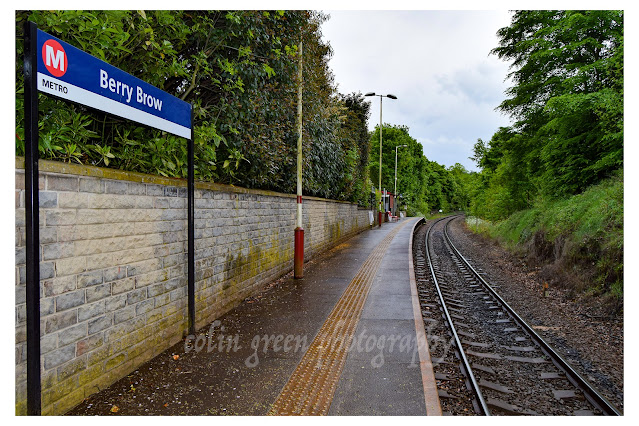In 2015 I set out to picture the railway stations along the Penistone Line between Huddersfield and Penistone, on the day I managed to picture Berry Brow, Honey, Brockholes, Stocksmoor, Shepley and Denby Dale, missing out on Penistone and Huddersfield which I still haven't visited, and Lockwood as the time got away from me. Recently in Huddersfield I decided to visit Lockwood and finally picture that stop, these pictures were taken on the 25th July 2020.
Lockwood Railway Station opened along with the line on the 1st July 1850 as a double platform twin track stop. Located just south of the Lockwood Tunnel approx. 1.5 miles from Huddersfield . The station became a junction stop in August 1868 when the Meltham Branch line opened to goods traffic, passenger transport commencing in July 1869, until the line was closed in 1965. Lockwood Station was staffed until the 1960's and after the closure of the Meltham Branch spent many years as the subject of closure speculation along with the entire Penistone Line. In the 1980's the decision was made and the line was to remain open, although it would now be a single track. The remains of the closed platform can still be seen at Lockwood although overgrown, the connecting tunnel blocked by a door.
The station has minimal facilities with a small car park, step free access, a basic small shelter. In 2018/19 it was attended by 40006 passengers at an average of 769 per week. That's a drop of over 11000 passengers compared to 2015/16, but despite this drop the line remains popular and is growing steadily year on year. Lockwood Station is served hourly in each direction daily.
Immediately north of the station is the 255 yard Yew Green Tunnel, better known as Lockwood Tunnel it has been the scene of a couple of incidents. The first tragedy to effect the tunnel occurred before it opened. In July 1849 the tunnel was complete although the railway line was, a group of men had been drinking at a nearby inn, when they challenged each to a race through the tunnel. Upon completing the race they realised one of their number was missing and tracked back through the tunnel until they came across the body of John Godly, who it was said had tripped and broken his neck whilst racing through the tunnel.





























